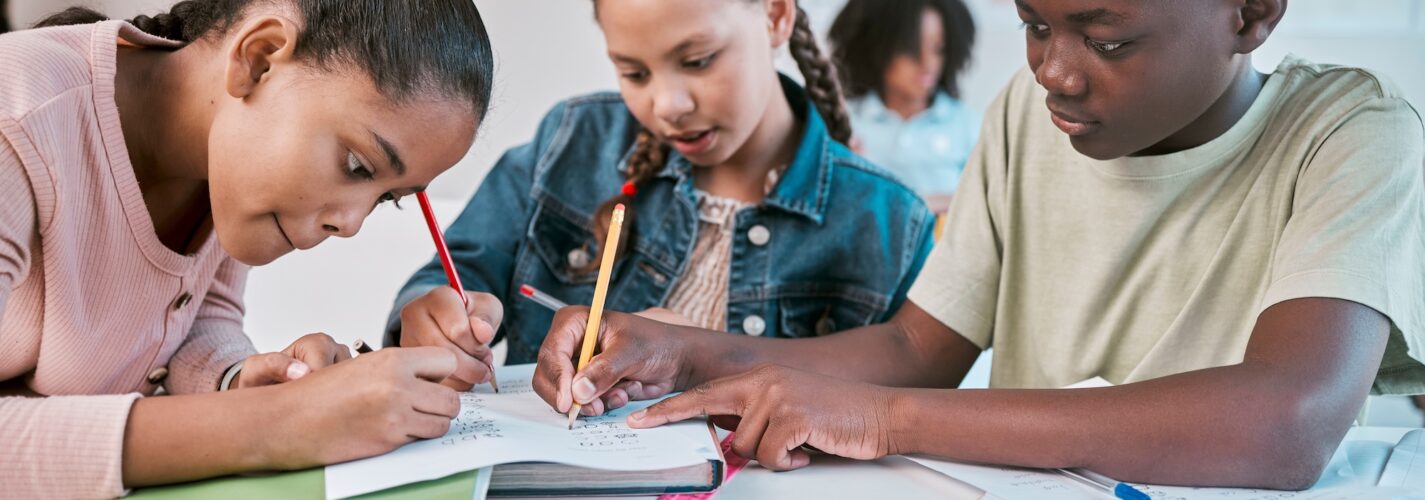August 2025 Research Rundown
By Madie Spartz
For August’s Research Rundown—our curated list of recent, relevant research we think is worth adding to the education equity conversation—we highlight articles on:
- Improving math pathways,
- Successful pandemic-recovery programs, and
- Our latest report, The State of Education in Minnesota
Charting the Course: The State of Math Pathways for Student Success
Charles A. Dana Center, Launch Years Initiative, and Education Strategy Group, July 2025
This report highlights the transformation underway in many states to make math pathways more relevant to students’ lives and future careers, while also emphasizing that there is still a long way to go to ensure every child has a rigorous and relevant math education. Longstanding math course sequencing, driven largely by higher education admission standards, is centered around calculus as the “final destination,” despite the fact that only a third of Bachelor’s programs require calculus. Rather than a one-size-fits-all approach, the report highlights what states can do to create “multiple, rigorous mathematics pathways.”
The report highlights nine key actions states can take to improve math pathways, including removing placement barriers, modernizing math for career readiness, and capturing and reporting progress via publicly reported data. The report also discusses five key data points that are necessary to track implementation of new pathways, such as enrollment and success by math course in grades 6-12, disaggregated by student group. Without detailed and responsive data, states can’t properly identify and address gaps in math achievement.
Why This Matters in Minnesota
Minnesota still largely follows the traditional math sequence, with Algebra 2 as a statewide high school graduation requirement for all students (and required for admission at most four-year colleges). There has been a push in recent years to eliminate this requirement, but without other safeguards in place, such as guaranteed math offerings in other areas or adjusted college admission standards, eliminating the Algebra 2 requirement risks exacerbating existing gaps in college attainment and rigorous coursetaking. As the report outlines, creating multiple rigorous pathways requires several stakeholders to work in tandem: policymakers, K-12 leaders, and higher education. Without a holistic redesign of math pathways in Minnesota, we risk lowering standards without replacing them with meaningful and equitable math opportunities for all students.
The Pandemic Learning Project: Lessons from Learning Loss Interventions and What Leaders Should Do Next
Bellwether, July 2025
Drawing from examples of successful pandemic learning recovery programs, this report outlines what states and schools can do to help students catch up from COVID-19 learning loss. Unfortunately, just three states have caught students up in reading, and only one state has caught students up in math. Although these numbers are far lower than what we’d like to see, the authors use their success to outline how other states can replicate it. The authors highlight six strategies that policymakers and administrators can take, including raising public awareness of the need for academic recovery and maximizing resources by focusing programming on the most disadvantaged districts.
While the large infusion of federal dollars helped with recovery overall, the effects have been uneven; how districts spent the money and implemented recovery programming mattered greatly. Illinois found success with high-quality tutoring, focusing on holding districts accountable to evidence-based practices like small student-to-tutor ratios and alignment with school curriculum. Students in this program outperformed their peers in both reading and math, and, notably, special education students and English learners saw the largest gains. Another successful example: Alabama provided optional extended learning time for students during seasonal breaks, totaling four weeks of additional instruction. In addition to positive gains for participating students, Alabama’s program also focused on teachers by providing competitive compensation for teachers’ additional instructional time and keeping class sizes low, which reduced administrative and planning burdens for educators.
Why This Matters in Minnesota
Minnesota has not yet been able to catch students up academically to where they were pre-COVID, and we have significant work to do to get there. This report offers tangible strategies that Minnesota could replicate to help students recover the learning they lost in the pandemic—such as high-impact tutoring and extended learning—but we need to act with urgency. The longer we wait, the larger these gaps become and the more difficult they are to close. Furthermore, by continuing not to take action, we risk accepting this as the “new normal” for Minnesota students.
The State of Education in Minnesota: A Policy Roadmap for Student Success
EdAllies, July 2025
Our newest report takes a look at what the data tells us about where Minnesota students are five years after COVID-19 abruptly shut down schools, and uses the findings to guide policy recommendations for where we need to go next. Overall, Minnesota’s achievement and opportunity gaps have widened in the wake of the pandemic by almost all metrics: test scores, school attendance, measures of mental health, and more. While the facts are sobering, we shouldn’t give into despair; there is an abundance of research to guide us in the right direction of improving outcomes for students.
While not exhaustive, the report outlines several statewide policy recommendations to address the most pressing issues in Minnesota education. From implementing high-dosage tutoring to paid student teaching to in-school mental health counseling, there is no shortage of evidence-based options to make education stronger and more effective in Minnesota. Without meaningful action based on the evidence, however, Minnesota students risk falling further behind.
Why This Matters in Minnesota
The report offers an exclusively Minnesota-focused lens on education issues, while drawing from nationwide research to help design solutions. We look at a wide range of Minnesota-specific data points, and offer analysis based on local approaches to policy and practice. In a time of federal uncertainty, looking carefully at whether we are advancing the strongest policy possible at the state and local level is more critical than ever.

